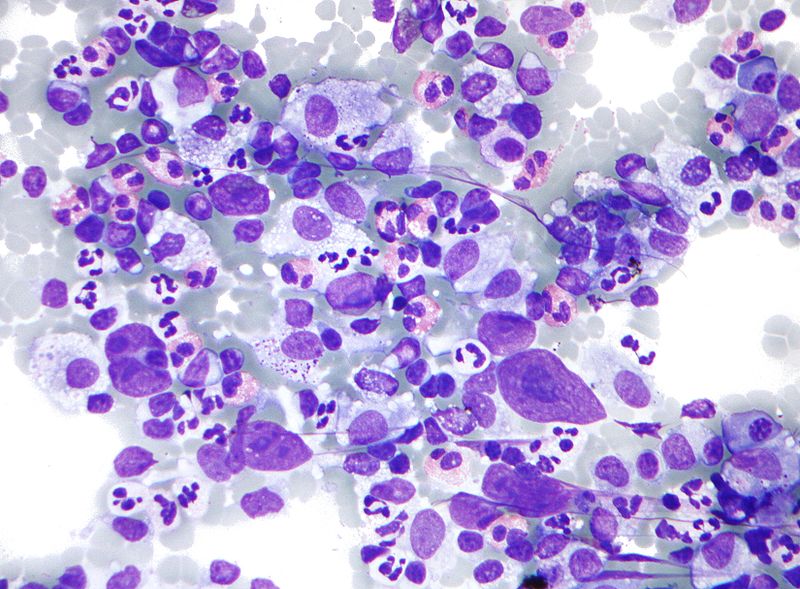B-cell lymphoma overview
|
B-cell lymphoma Microchapters |
|
Diagnosis |
|---|
|
Treatment |
|
Case Studies |
|
B-cell lymphoma overview On the Web |
|
American Roentgen Ray Society Images of B-cell lymphoma overview |
|
Risk calculators and risk factors for B-cell lymphoma overview |
Editor-In-Chief: C. Michael Gibson, M.S., M.D. [1]
Overview
The B-cell lymphomas are types of non-Hodgkin lymphoma affecting B cells. It develops more frequently in immunocompromised individuals (such as those with AIDS.)
Historical Perspective
Classification
Pathophysiology
Genetics
Chromosomal translocations involving the immunoglobulin heavy locus (IGH@) is a classic cytogenetic abnormality for many B-cell lymphomas, including follicular lymphoma, mantle cell lymphoma and Burkitt's lymphoma. In these cases, The immunoglobulin heavy locus forms a fusion protein with another protein that has pro-proliferative or anti-apoptotic abilities. The enhancer element of the immunoglobulin heavy locus, which normally functions to make B cells produce massive production of antibodies, now induces massive transcription of the fusion protein, resulting in excessive pro-proliferative or anti-apoptotic effects on the B cells containing the fusion protein. In Burkitt's lymphoma and mantle cell lymphoma, the other protein in the fusion is c-myc (on chromosome 8) and cyclin D1[1] (on chromosome 11), respectively, which gives the fusion protein pro-proliferative ability. In follicular lymphoma, the fused protein is Bcl-2 (on chromosome 18), which gives the fusion protein anti-apoptotic abilities.
Microscopic Pathology
Shown below is a microscopic image of Hodgkins Lymphoma which is a type of B cell lymphoma.Lymph node FNA specimen(Field's stain) The micrograph shows a mixture of cells commonly seen in Hodgkins lymphoma:
- Eosinophils
- Reed Sternberg cells
- Plasma cells
- Histiocytes

Causes
Differentiating B-cell lymphoma from other Diseases
Epidemiology and Demographics
Risk Factors
Natural History, Complications and Prognosis
Diagnosis
Staging
History and Symptoms
Physical Examination
Laboratory Findings
X-ray
CT
MRI
Other Imaging findings
Other Diagnostic studies
Treatment
Medical Therapy
Surgery
Primary Prevenention
Secondary Prevention
References
- ↑ Li JY, Gaillard F, Moreau A; et al. (1999). "Detection of translocation t(11;14)(q13;q32) in mantle cell lymphoma by fluorescence in situ hybridization". Am. J. Pathol. 154 (5): 1449–52. doi:10.1016/S0002-9440(10)65399-0. PMC 1866594. PMID 10329598. Unknown parameter
|month=ignored (help)